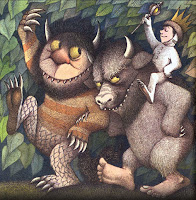
compiled by Michael Harrison and Christopher Stuart-Clark
This treasury is a compilation of over 90 classic poems. This book has some poems for younger children, but many have bigger words, making it better for a read aloud or a book to pick a poem from during a break as opposed to independent reading. The illustrations are beautiful, but do not distract from the poems, as they are confined to a smaller part of the page. The poems are in black ink using Times New Roman font on a white page. This makes the treasury look less friendly to children in my opinion, as it is set up in a very adult-like fashion. Some authors featured in this anthology are Langston Hughes, Lewis Carroll, William Blake, William Shakespeare, Robert Frost, John Keats, and E.E. Cummings. It also includes O Captain! My Captain! by Walt Whitman. I do not believe I would use this anthology for any grade under third, though it could be present in younger classrooms for children to flip through and attempt to read. Though this book was suggested by a librarian at SLPL for a great children's anthology, I think I would have to disagree with her. Though humor is present is some of the poems, such as The Galloping Cat by Stevie Smith, this anthology also includes "Death, Be not Proud" by John Donne:
"One short sleep past, we wake eternally,
And Death shall be no more: Death, thou shalt die."
With too much focus in younger grades on the poetry present in this book, children may become confused and will not enjoy poetry as much as poetry by Jack Prelutsky or Shel Silverstein. In a classroom, I believe books by those gentlemen as well as other poetry containing humor is much more beneficial than a book like this one.
Harrison, M., & Stuart-Clark, C. (2004). The Oxford Treasury of Classic Poems. New York: Oxford University Press, USA.







